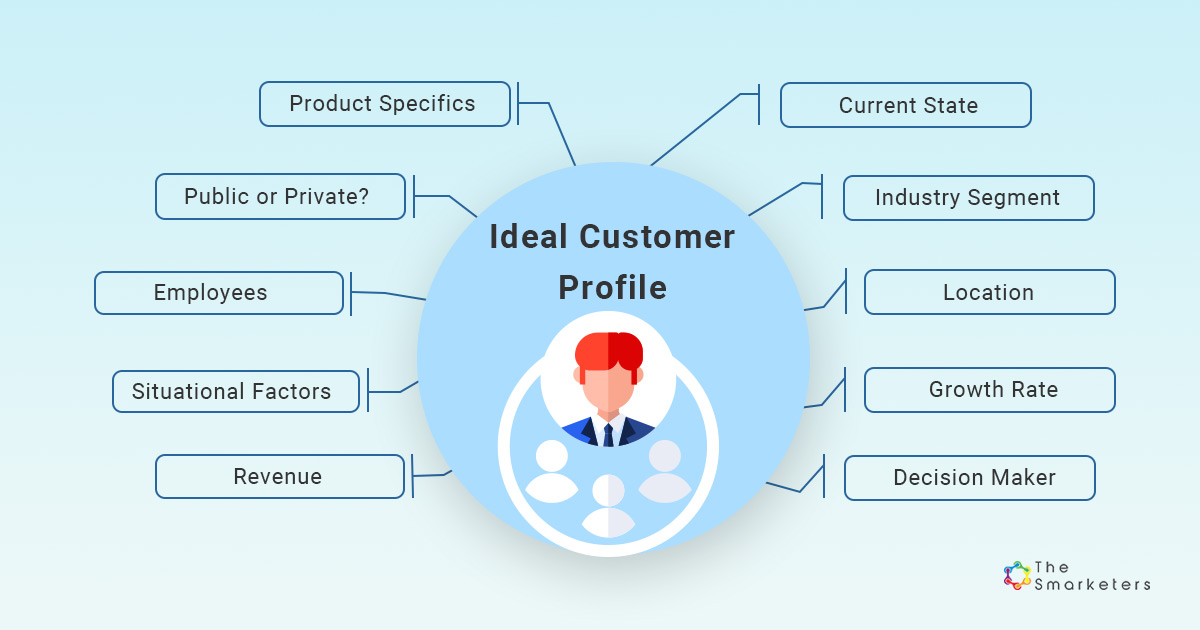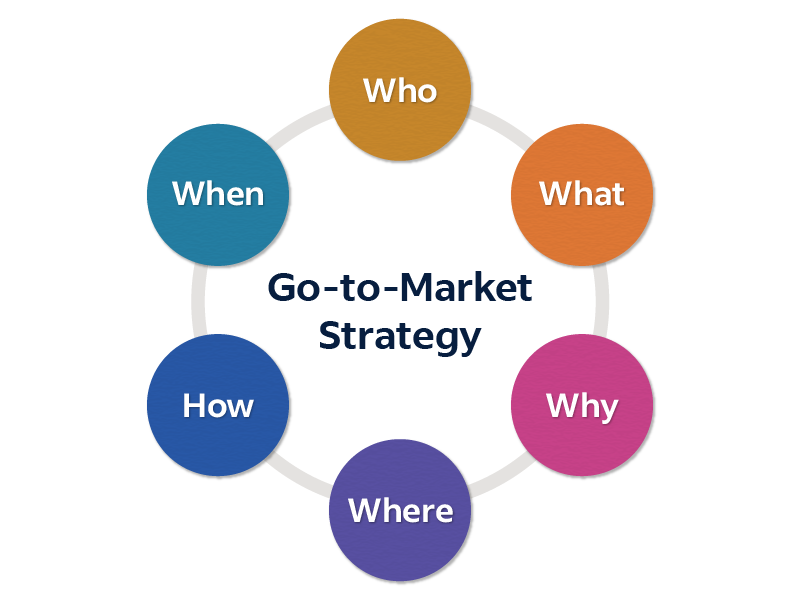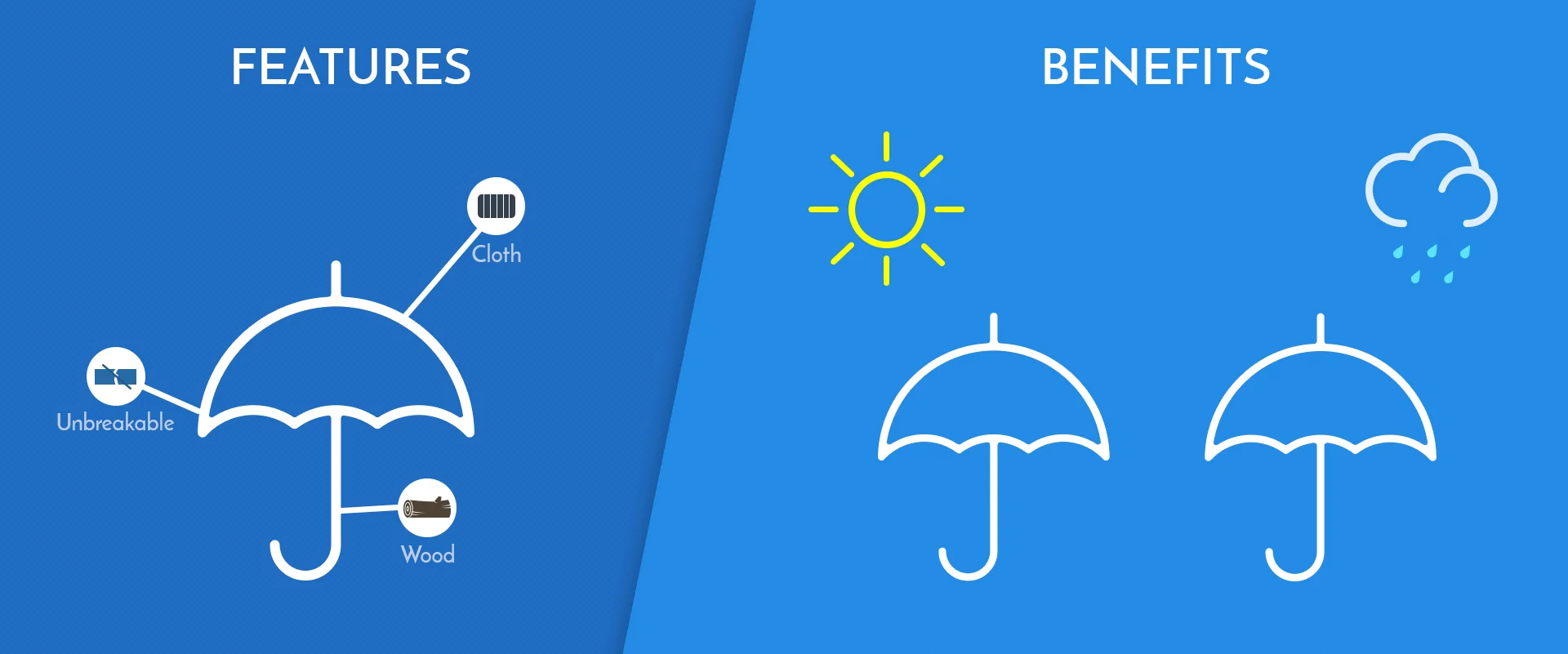How To Create A Successful Go-To-Market Strategy (GTM Strategy)

It’s unfortunately common for promising startups to develop a product, stir up some hype on social media, but, lack a go-to-market strategy. This tendency to tackle issues that feel innovative and interesting, instead of the issues which serve a pressing market need, can cause business leaders to overlook the essential aspects that will dictate the success or failure of a product.
Even if you’ve got a beautifully engineered, innovative product lined up for launch, if you don’t have a complete picture of your target audience and the market you’re launching into, your idea may not survive the challenges set out for it.
No matter the details of your product, you need a keen understanding of the elements that will influence your success, clearly-defined parameters for what success looks like to you, and how you’ll achieve it. This means crafting a go-to-market strategy (GTM Strategy) that will see you through to a successful launch.
What is a Go-to-Market Strategy?
A go-to-market, or GTM strategy, is a comprehensive marketing action plan that covers all aspects of how a company will engage with its target market, and gain a competitive foothold. An effective go-to-market strategy will serve as a blueprint for delivering a specific product to a specific customer, based on a range of factors dictated by the market, such as distribution and pricing.
While a marketing strategy will cover the kinds of content and tactics you’ll use to meet the demands for a product that exists, a go-to-market strategy is centered around products that aren’t available yet. Aside from newly developed products, a go-to-market strategy can also be useful for when you’re expanding into new market segments, going through a rebranding, or looking to drive up your sales for a specific product.
What Does a Go-to-Market Strategy Do?
With the right approach, a go-to-market strategy will establish a firm launch timeline, and give all relevant stakeholders the information they need in the way of timeframes, milestones, and outcomes, in a single, centralized place.
Some of the key strengths of a go-to-market strategy include, but are not limited to:
- Having a clearly-defined plan in place which gives direction for all stakeholders.
- Having less time-to-market for new products
- Reduced risk of unforeseen costs that can arise post-launch
- Insights that will make it easier to react to changes in customer demands
- The foresight to mitigate challenges and obstacles
- A clear path towards success milestones
- Airtight compliance with any relevant regulations
These advantages and more make a go-to-market strategy essential for product launches, new campaigns around existing products, and similar projects. As they’re concerned with projects spanning longer timeframes, and work to inflexible criteria for success, they can often provide effective benchmarks for smaller, more malleable marketing strategies.
How to Create a Successful Go-to-Market Strategy
Now that you have some understanding of what a go-to-market strategy is, here are some essential steps and best practices that will help you create a successful go-to-market strategy…
Identify your Customer Personas
Though it’s an essential staple of any marketing project, the importance of knowing your customer personas can’t be overstated when creating a go-to-market strategy. Your target market is going to be made up of highly distilled and nuanced segments, and each of them are going to behave differently depending on their pain points, purchasing power, personal background, and other factors.
The broader your general target market is, the more important it will be to craft your go-to-market strategy around specific personas representing specific audience segments. A good way to start the GTM process is to sit down with your marketing team and have a brainstorming session in which you determine the various types of customer who your product will be positioned to help.
Once you have a general idea of various segments’ motivations, wants, and pain points, you’ll be in a better position to create content that’s tailored towards a specific type of person, and present it in an engaging, relatable way.
Make Plans to Tailor your Messaging
Once you have your customer personas established, it’s time to look at how your product will address their pain points, and how you’ll frame this in your messaging.
Use the takeaways from your brainstorming session to create a table of buyer personas, with each individual persona accompanied by their problems and pain points, and a specific way in which your product can address them. From there, you’ll be able to create an overview of your messaging that links their problems with your solutions, and inform how your product should be highlighted in various pieces of content. You can also create custom referral links to send to your affiliates as a part of your GTM strategy.
As you go through the pain points listed for each customer persona, you’ll notice that some may have immediately obvious solutions baked into your product, whereas others may require a little more work to articulate. If you’re struggling to find a connection between a particular pain point and any of the features of your product, try to agitate the pain point, and see if it can be extrapolated to a point where it creates a clear need for your product. This is unlikely to work with every pain point in your list, but you may be surprised by the insights you can gain when you ride a specific pain point to its logical conclusion.
Where Possible, Test your Messaging
If you’re poised to launch a totally new, never-before-seen product, then you’re not going to have much recourse for testing your messaging before the product is actually available to buy. However, if you have comparable products already on the market, and some spare marketing resources, then this can present a great opportunity to try out the messaging you’ve developed for your customer personas.
Testing your messaging, as well as other factors such as advertising platforms, times of day, and so on, can give you some exceedingly valuable insights you can use to bolster the strength of your GTM strategy. The sooner you’re able to start testing your messaging, the more you’ll be able to tweak it for success as you get closer to your launch. By keeping a close eye on engagement metrics, and making incremental changes to your content, you’ll be able to make informed optimizations to your messaging that will ensure a much stronger launch day.
Even when you’re launching your first product or one with no comparable products being sold by your business, there’s a wealth of great case studies out there that can help you review and re-draft your messaging for all-around more engaging content. Utilizing relevant marketing case studies can inspire innovative approaches to your go-to-market efforts.
Frame your Go-to-Market Strategy Within a Proven Sales Strategy
Once you’ve established who you’re selling your product to and the messaging you’ll use to do it, the next essential step is to apply a proven sales strategy that will carry your product after its official launch.
There are a number of proven strategies lauded by sales experts, some of which will cater to certain products and businesses more than others. Here are a few that may be a good fit for your GTM:
Self-Service: A self-service sales model is where a customer can purchase a product from a business without any interaction with an employee of that business. This is universally practiced by B2C businesses, such as ecommerce stores like Amazon and streaming sites. This model is best suited to simple, familiar products that are cheap to produce and sell in large volumes. Though the necessary architecture is hard to build, if it’s done successfully, it will give you a short sales cycle, and excellent profit margins.
Inside Sales: ‘Inside sales’ describes a model where your prospects need to be developed by sales reps to reach the point of conversion. It’s very common among SaaS companies, who sell moderately complex and medium-priced products. The typical inside sales cycle will range from weeks to months, and requires a good sales manager and a team of effective reps. Though this model can be challenging to develop from scratch, it can be highly profitable and easy to scale as your business grows.
Channel: In a channel model, a third party will do all the front-line sales work on your behalf. Though this can relieve a lot of strain on your resources, it’s often hard to build from scratch, as good agencies and partners can be hard to come by, and will need to be educated on the features of your product. One of the key benefits of this model is that it’s significantly cheaper than other models, as it cancels out the need for recruiting new in-house sales employees.
Generate Inbound Leads Through Content Marketing
Because most inbound leads are generated by a pre-existing need for a product, they’re significantly easier to acquire and convert compared to outbound leads.
Content marketing is known to be one of the most effective methods of lead generation. With this in mind, having a content plan in place is essential to generating those all important inbound leads.
Your marketing team can stimulate inbound traffic by researching keywords that your primary audience segments are likely to search, then crafting a calendar of high-quality, authoritative content based around those keywords. Aside from generating enquiries, leading link building agency Hive19 explain some of the additional benefits of this type of online marketing strategy including:
- Increased authority to power ranking improvements
- Building topical relevance to drive traffic and assist long-tail keyword terms
- Direct and engaged traffic from relevant publications
- Unique brand visibility and presence building
As you set about briefing in your content calendar, make sure you’re scheduling content that speaks to specific stages in the buyer journey, and spans every possible phase in your sales funnel. Each stage in a typical funnel will call for different styles of content, with top-of-funnel content tending to be broader, lighter, and lower resolution, becoming more specific and granular the further down the funnel you go.
For example, a piece of content covering the query “what is a go-to-market strategy” would sit at the top of the funnel, whereas content covering a specific, granular subject such as “how to improve your go-to-market strategy with content marketing” would be at the bottom.
If your content marketing resources are thin on the ground, and you’re watching your competitors publish highly engaging content at a dizzying rate, (which can be tracked with competitive intelligence tools), then you may feel a little overwhelmed by the prospect of creating a calendar from scratch. Fortunately, there’s a great range of educational materials on the subject available online, such as these templates produced by leading CRM HubSpot.
Review your Pipeline and Find New Ways to Optimize It
Like any other kind of strategy, your go-to-market strategy will need to be constantly analyzed, reviewed, and optimized in order to keep up in a competitive market.
A successful go-to-market strategy will include a system of measuring KPIs, such as volume and conversion rate. With these metrics giving you a clearer idea of your pipeline, you’ll be much better equipped to optimize the pipeline for conversion rate between different stages in your customer journey. As your prospects move through your funnel and drop off during various qualification processes, it’s important to take a proactive approach to analyzing behaviors at each phase, and taking the time to understand where your opportunities are fizzling out, and why this is happening.
Aside from analyzing the overall flywheel, you’ll also need to drill down to the figures attributable to each sales rep. This will reveal skills and processes where each member of your sales team may need to improve, and where your vocational training resources are best spent. As you tailor your training modules to the demands of your team, be sure to prioritize shortening the typical sales cycle wherever possible. If you notice that some reps are completing particular stages in the pipeline faster than others, this could reveal some great opportunities for peer-to-peer training, giving your managers more time to invest in other pressing tasks, and creating a more cohesive working culture in your team.
Common Go-to-Market Strategy Mistakes to Avoid
Now that we know the essential steps of creating a successful go-to-market strategy, here’s a handful of the most common go-to-market strategy mistakes managers tend to make. Stay wary of these as you finalize and execute your strategy to steer clear of avoidable pitfalls.
Having a Vague Ideal Customer Persona
All too often, business leaders construct a GTM strategy that either isn’t informed by an ideal customer persona, or create a go-to-market strategy with an ideal customer persona that’s vague and poorly-defined.
As we said earlier, the importance of knowing your customer personas can’t be overstated when crafting an effective GTM strategy. Make sure that each customer persona that makes up part of your strategy covers salient details, including demographic information, their pain points, the triggers for interest in your product, and the needs and challenges they face in their day-to-day life.
Exercising Poor Segmentation and Positioning
Another common pitfall to anticipate is crafting a GTM strategy that focuses on the wrong segment of a given market.
Each segment of your market will present different expectations from a given type of product, the messaging in its content, and the mechanics behind the way the product is sold. If you’re selling SEO software with a range of pricing plans and you’re nurturing the head of marketing for an enterprise-level client, they’re not going to care about the free trial period or the most basic pricing plan. Similarly, if you’re selling it to independent freelancers, they’re not going to pay much mind to the option of thorough demo sessions or the prospect of having a dedicated account manager.
Take steps to ensure that all your pitches, content, and offerings making up your funnel are well-targeted to the relevant segments and that each segment is differentiated enough to showcase your value when compared to the competition.
When it comes to exercising poor segmentation and positioning for e-commerce, there are several strategies that can help you get the most out of your efforts. The first is competitive pricing. You want to be sure you’re offering competitive prices in comparison to your competitors, which will help customers recognize a better deal when they see one.
This will drive sales and increase revenue for your business. Additionally, consider using services such as Dealavo’s dynamic pricing solutions that offer dynamic pricing based on market conditions, customer behavior, and analytics. By integrating this into your systems, you can ensure maximum profitability while still providing great value to the customer—which is exactly what you need in order to succeed with e-commerce segmentation and positioning.
Being Too Focused on Acquisition
For new businesses, it’s common practice to gain an understanding of their customer, then spend the majority of your time and resources on the acquisition and little else. Though this is understandable, you shouldn’t let it detract from the activation phase, where you put your value proposition in the spotlight and make your customers more familiar with your product’s key features. Another common issue arises when companies fail to devote enough energy to the referral phase, thus undermining an important component of their flywheel.
Though the exact proportion of time and resources spent on each phase will depend on your market and the various nuances of your business, make sure you’re putting the right amount of thought into every part of your pipeline and setting your GTM up for long-term growth.
Focusing on Features, Rather than Benefits
When a new product that’s spent months or years in development finally comes to market, a lot of marketers can have a tendency to center their content and communications around its features rather than the value it can offer the end user.
Though this is a fundamental aspect of content creation, linking features with benefits is overlooked more often than you may expect, and if it’s allowed to go on too long, it can poison your entire strategy. With each new piece of content and messaging that enters into your strategy, make sure it’s not becoming oversaturated with complex, arcane information about your product features, and work to highlight the value your product can offer your customers.
Final Thoughts…
Building a far-reaching and comprehensive go-to-market strategy is essential to the success of any product launch, and its components can go a long way in dictating the success or failure of your product. By understanding and actioning the practices in this guide and looking out for common pitfalls, you’ll soon be on your way to a product launch that delights your customers and produces great profit margins!
This article was contributed by Harvey, who is an experienced and passionate marketer looking to inspire professionals within the industry.







